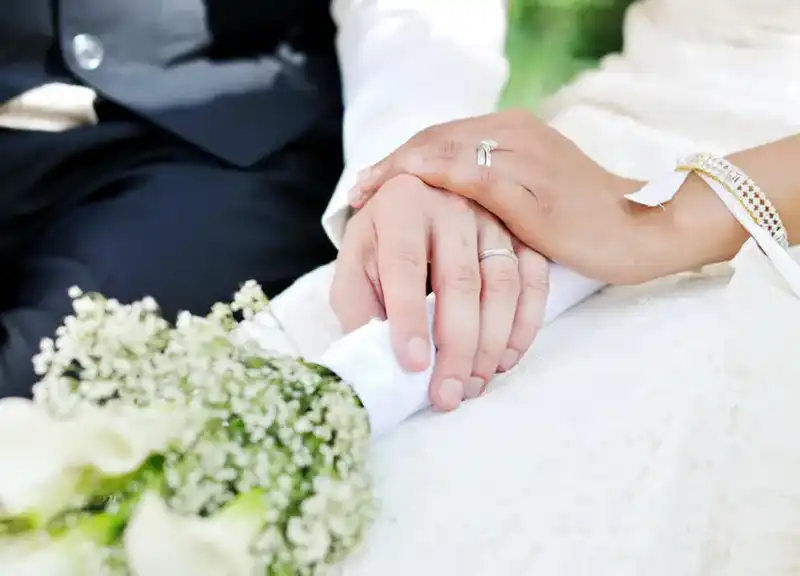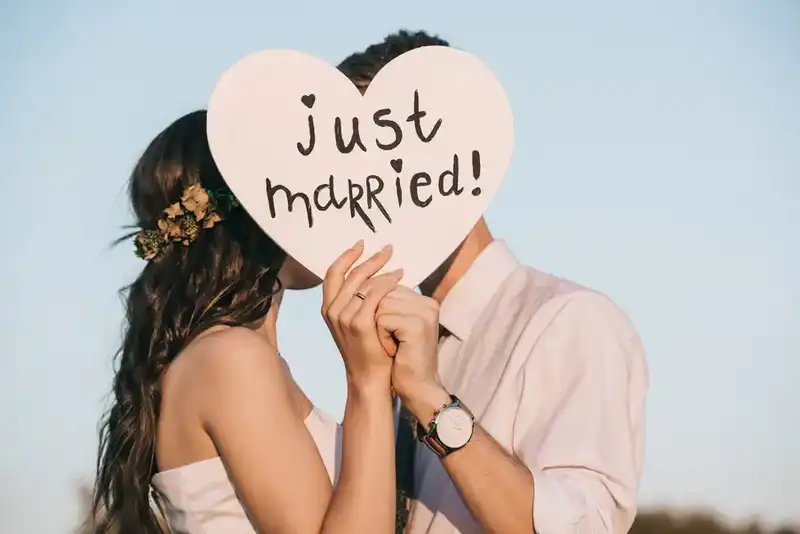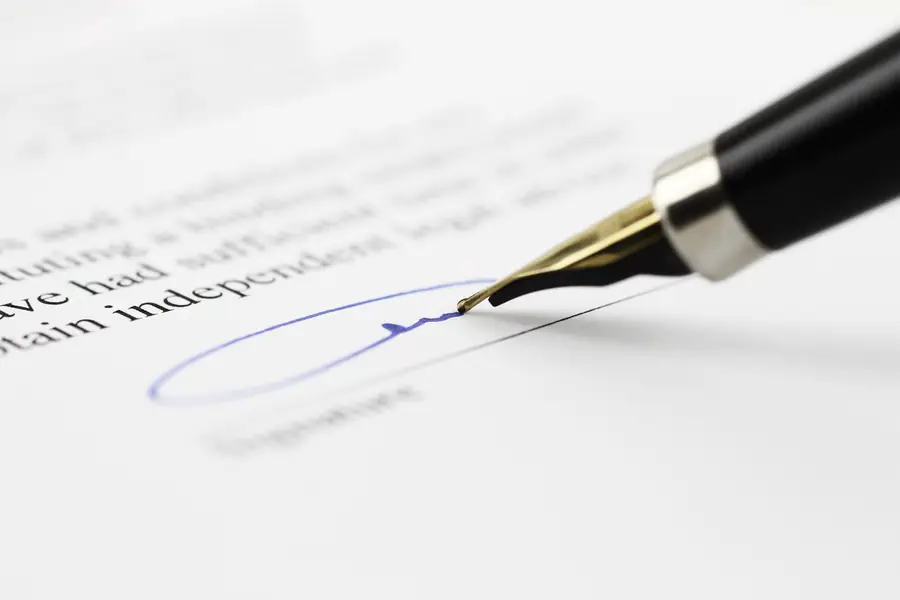Legally Changing Name After Marriage UK (Where & How to Make Updates)
How to Legally Change Name After Marriage UK

How to Legally Change Name After Marriage UK

Congratulations! You’ve said your “I-do’s” and sealed them with a kiss. But, have your “I-do’s” suddenly turned into “to-do’s?” Thank-you cards, dress preservation, estate planning – an endless list! If changing your name is at the top of that list, we can help with our changing name after marriage UK guide.

After your big day, jetting off on your dream honeymoon is the icing on the wedding cake. But if you’re also plagued by the practicalities of life and want to tackle the tedious admin of trying to figure out how to legally change your name after marriage, NameSwitch is here to help!
In the vast minefield of name change processes, policies and paperwork, you have probably searched up, “how to change your name after marriage UK” – we get it. We would too. But rest assured, your searching has brought you to the right place! Here are a few things you need to do to take on a new married name and make it legal.
1. Choose your Name
Seems like the obvious, right? Maybe so, but sometimes it’s not that simple of a decision to make. Your name makes up a massive part of your identity and something you’ll answer to daily, so settling on what your new name will be is a big decision! You might decide to take your partner’s name or choose to go for a double-barrel. Other options include creating an entirely new name to symbolise a new beginning or to adopt one’s maiden name as a middle name. These two options would require a deed poll to change. Ultimately, the choice is yours. Keep in mind, there is no time limit for changing your name or legal obligation to do so. If you want to keep your birth name that’s perfectly fine or if you want to use you new name right away, that’s great too! If you’re struggling with the decision, why not check out our blog on the double barrel name after marriage UK for a little more insight. Fancy a little half & half? A growing number of women are opting to keep their maiden name professionally and change their name in their personal life. Get the low-down on the practical considerations here.
2. Gather your Documents
Next, you’ll need to obtain your legal documents. In order to change your name in the UK, a legal document is required to accompany name change requests. This could be an original marriage certificate, decree absolute (for divorce), or a deed poll. Whatever your name change reason, NameSwitch’s award-winning name changing service can help! If you are basking in newly-wedded bliss, your marriage/civil partnership certificate will serve as official supporting evidence and it entitles you to take your other half’s surname or double barrel your surnames (with our without a hyphen). This goes for both men and women. You also have the option to use a deed poll to take on your spouse’s surname or to double barrel surnames. If you’re planning to mix it up and create a shiny new surname or change your first or middle name, you’ll need a deed poll. For more information, take a look at our guide on how to change name by deed poll.
3. Make Copies
Figuring out which companies will take a simple copy of your legal document and which ones need originals or certified copies can be a time-consuming ordeal, so it’s a good idea to have some of each on hand. Some businesses require an original document issued by an authorised wedding celebrant, registry office, a UK deed poll service provider, solicitor or divorce court. While, others will accept a photocopy which has been certified to be a true copy of the original, seen by and signed by an authorised person. Alternatively, some companies will accept a basic clear and legible photocopy or a clear scanned copy of a reasonable size (around 2-5MB). Pro Tip: We recommend obtaining 2 to 4 original copies of your legal document to enable multiple name change requests to be sent out in parallel.
4. Plan it Out
From changing your name with the DVLA and your local authority to updating records with your credit card companies or mortgage provider – the list can seem overwhelming! The average adult has over 24 government bodies and companies to notify of their change in name. Therefore, it’s a good idea to make a plan - think about lead times, upcoming travel plans, important dates, or big events and then plan accordingly. It’s important to prioritise at least one form of photo ID. We have all of the details you need to get started in our guide to a DVLA name change online.
5. Invest in Envelopes & Stamps
Although, a lot of name change request can be done online or in person, there are a number of companies and government bodies that will require you to send your documentation via post. When sending in original certificates, you’ll want to enclose a self-addressed envelope with a large stamp to enable a speedy return of your papers. It’s always a good idea to use tracked/special delivery service via the Royal Mail for a little added assurance for your precious documents.
6. Get Started
Now that you’ve decided on your name, received your official documentation, made your copies and developed a plan of attack, it’s time to start your name change journey. This is where NameSwitch can come in handy - we have done the legwork so you don’t have to! With our name change toolkit, you can choose who to notify (from over 700 UK companies and governing bodies), enter your details on our secure system, and our unique automation completes the forms for you. All you have to do is download, sign and send your already completed personalised letters and documents. You’ll also receive a step-by-step instruction guide outlining what each company requires to keep you right on track. Voila! A tedious task made simple!
Have questions? Need more info? Get in touch with us today!

The average name changer will end up notifying 24 or more organisations, ranging from government bodies, local authorities, and service providers, to healthcare providers, pensions and bank accounts. To help you get organised, NameSwitch has created a downloadable free name change checklist which will help you work out exactly who to inform of your name change after marriage in the UK.
Let’s get to the point of why you’re here. Where do I need to change my name after marriage, you ask? Here are a few of the most important ones.
The DVLA
The list of places to notify of your new name may be quite long, but the DVLA is the only entity which requires you, by law, to have your driver’s licence match your new name – so this is one to prioritise! If you’d like further guidance on updating your driving license and your vehicle registration, check out our super-helpful DVLA name change guide for everything you need to know.
HM Passport Office
Your passport is often used as a formal piece of identification, so it’s essential that it reflects your official name. You can update your passport right away or defer until the renewal date. However, if you choose to wait a while on this, make sure any travel reservations match the name on your passport. You’ll also need to weigh up the practicalities of having different names on your 2 pieces of formal ID - this can delay certain applications such as mortgages and loans. Fortunately, the UK government has recently streamlined the changing name on passport after marriage process making it much easier. This can be done either online or via post.
HM Revenue & Customs & Local Authority
In order to ensure you are taxed correctly, you’ll need to inform HRMC of your new marital status and name change. It’s also important to inform your local authority too so that your council tax and electoral register will reflect your new official name. Good news - the process of changing your name on all of these can all be done online! And there are postal options too.
Banks, Mortgage Providers, Land Registry and Lenders
It’s important to notify financial institutions and lenders that you’ve changed your name. Equally, HM Land Registry should also be updated to reflect your new name as most lenders require your details to match the title deeds.
Health Services
Although your NHS number stays with you for life, you will need to update your name with your GP, dentist, and any other healthcare organisations of your new name in due time. You will also want to update records with your gym, vet, hairdressers and other business as such.
Other Companies & Services
There are numerous other government bodies and organisations who should be notified of your official name change. These include, child benefit office & office of the public guardian if applicable, pension providers, utility companies, insurance providers, mobile and broadband providers, credit card companies, monthly subscriptions, and many more!
If you are curious about how to change name after marriage in Scotland, Wales and Ireland, you are in the right place! The process is largely the same across the UK. Your marriage certificate can be used as official documentation for your name change. Deed polls are also accepted by all government bodies and countries within the UK. For additional information on how to change name by deed poll, take a look at our helpful guide series or visit our UK deed poll service page.
No matter where you live in the UK - England, Scotland, Wales or Ireland, NameSwitch notification services can help you breeze through the haze of the name change maze! We are dedicated to saving you time and providing you with a safe and secure service. We make sure your name change is accepted right the first time, every time. Don’t sit in admin paralysis - let our amazing service take the hassle out your hands.
Now that you are ready to embark on your name change journey, here’s a quick recap of what you need to do.
If the time feels right for you to start the sometimes-dreaded, sometimes-overwhelming, and what could be time-consuming “change of name after marriage” process, we hope this guide has given you a little boost of confidence and helped shed some light on the task at hand.
If you don’t want to go at it alone, let NameSwitch help you change your name after marriage! We are experts at making complex things simple! Whether you have just walked down the aisle in or you are on the opposite end of the spectrum facing a separation, we can help you through the name change process - whatever the reason. We have loads of free resources, guides, and checklists available to help you move forward in your next chapter of life. From tips on how to change your name by deed poll, what to do if you have tied the knot abroad, or name change guidance for non-UK nationals - we have the resources you need! Perhaps you’re on the opposite end of the spectrum and looking for information on how to legally change your name after divorce UK or looking for other divorce-related name change guidance – again, we’ve got you covered.
There is no deadline or legal obligation to changing your name after marriage. Some brides and grooms are ready to symbolise the start of their new life right away with a name change, while others choose to make the change years down the road. Do whatever makes sense for you.
Your name does not automatically change once you get married nor does it have to. If you wish to change your name after marriage, you can use your marriage certificate or civil partnership certificate or deed poll as legal documentation to accompany your name change requests.
Not at all! You do not have to change your name after marriage or civil partnership. In fact, many people decide to keep their birth name. The choice is yours and remember, you can always change your name should you decide to in the future.
You do not have to change your name when you get married. However, if you want to take on your partner’s surname, double-barrel your names, or create a whole new name, you certainly can, but there is no legal requirement to do so. It’s completely up to you!
If you change your name after getting married or entering into a civil partnership, you will need to change the name on your bank account. Most banks will require a marriage certificate as proof. You do not have to update your records if you don’t change your name after marriage.
Indeed, it is. A marriage or civil partnership certificate entitles you to take your spouse’s surname, double-barrel surnames and change your title. Or you can opt for a deed poll which serves as legal documentation for a name change in England, Scotland, Ireland and Wales.
Marriage certificates cost £12.50 each and can be ordered from the local registry office (or via the GRO if you were married 2 + years ago). Or you can make use of our Deed Poll Premium Printed Package and complete your entire NameSwitch under 1 roof.
The average name changer notifies approximately 24 different government bodies, local authorities, and companies. Figuring out who needs what can be daunting and takes 14 hours on average! Most name changers find this process tedious and overly complicated.
NameSwitch has created a UK first and only award-winning namechange toolkit to help simplify this process. Change your name with speed and ease saving you so much time and with peace of mind that you’ll get it right first time.
In just 3 easy steps you can select who you need to notify from 700 government bodies, local authorities, and companies. You only need to enter your details once. You’ll have instant access to download your pre-populated name change letters, forms and personalised instructions ready for you to print and sign.
Need our expert advice? Why not check out our FAQs or Get in touch with our UK-based support team for a human response - we are here to help.
Dive into our practical Nameswitch guides.
Learn how to change your name on your drivers licence, on your Facebook account and how to handle updating your COVID pass along with your passport

Fancy a free name-change checklist?
Get your free name-change checklist to help you plan out all of the companies, government bodies and profiles you need to notify of your new name.
